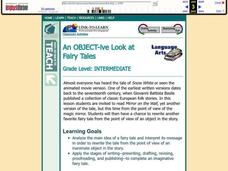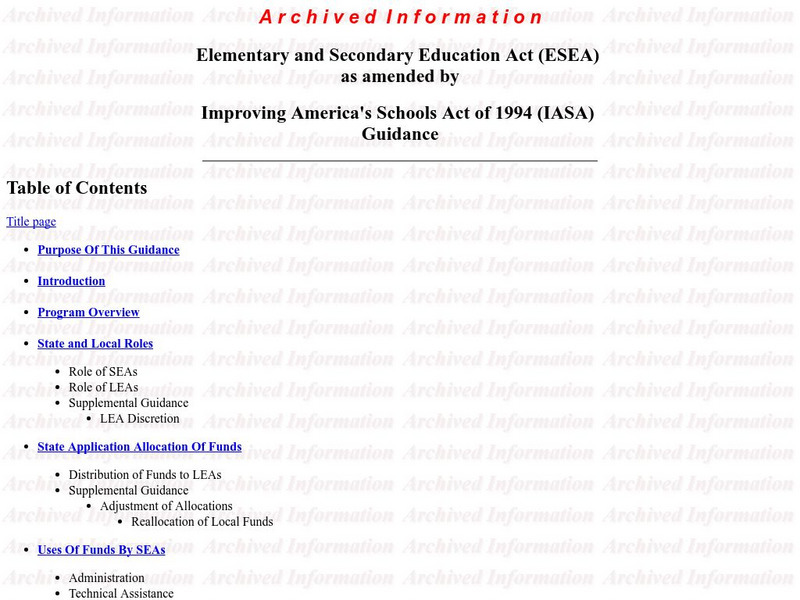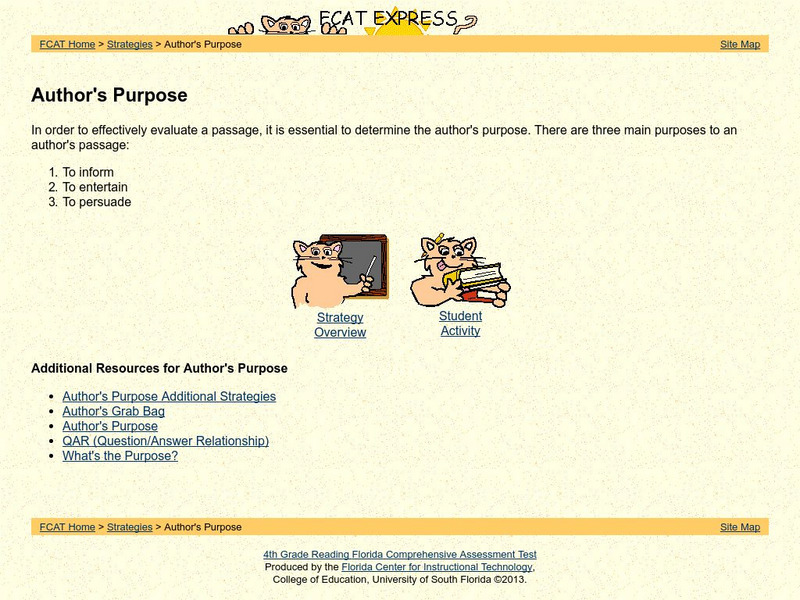Curated OER
Discovering Saturn, The Real "Lord of the Rings"
Reading, writing, and rings! A lesson from NASA combines space science with authentic reading and writing tasks. Included in this lesson are pre-reading activities, four mini informational booklets on Saturn, a structured note-taking...
Curated OER
Persona in Autobiography
A talkative old man? A naïve believer in Human Perfectibility? A Sage? Who is this guy, anyway? The Autobiography of Benjamin Franklin launches a study of the way Franklin uses structure, style, and purpose, as well as different...
Curated OER
Write Right!
After watching part of a Club Write Kids video and discussing the editing process, each group of learners writes a letter to a favorite author. They ask for a copy of a page of manuscript that has gone through the editing process. Prior...
Curated OER
Report Writing
The guidelines for writing a report are concisely summarized in a presentation that details the phases (exploratory, implementation, improvement), the revision process, and the formatting for this kind of technical writing.
Curated OER
Friendly Letter Writing and Sentence Structure
Explore communication through writing by analyzing individual sentences with young writers. They practice writing compound sentences and identifying sentence fragments. The next step has them learn the five parts of a friendly letter....
Curated OER
Mood
In this mood worksheet, students read a passage and define the theme, mood, and purpose of what they read. Students complete 3 questions.
Curated OER
Nutrition
Young scholars determine which foods help keep our bodies healthy. They identify the six food groups and classify different food items into the correct categories of the food pyramid. They evaluate for one week the foods that they eat...
Curated OER
Dictionaries
Students understand the way the dictionary is laid out as well as the purpose for why people use dictionaries. In this language arts lesson, students recognize the need for alphabetical order and are able to find words using a...
Curated OER
Fairy Tales
Students explore fairy tales. In this fairy tales lesson, students analyze the main idea of a fairy tale and interpret it. Students then re-write the story from the point of view of another character or object in the story.
Curated OER
Freshman Project-Part 6-Final Written Report
In this project worksheet, students complete a formal write up of their experiments. This includes a rationale, a purpose, a hypothesis, their experimental design, materials, procedure, data tables with variables, graphs and a concluding...
Curated OER
The Need to Evaluate
Students access 3 Internet sites. They examine the need to question information found on the Internet and research a question using the Internet. They study discrepancies among Web sites and brainstorm indicators that determine a Web...
Curated OER
Evaluation Practice
Students analyze several web sites for the five indicators: authorship, purpose, URL, currency and design. they Recognize the differences between a credible Web site and a questionable one.
Curated OER
Author's Purpose
Students discuss and define what folk and fairy tales are. In this literature lesson, students construct their own working definitions for folk and fairy tales. Students choose to work as a class or in cooperative groups. Then students...
Curated OER
Shared Reading: A Lesson Plan to Introduce Patriotism in the Classroom
Students learn why we say the Pledge of Allegiance through shared reading. In this shared reading lesson plan, students are shown the Pledge of Allegiance in 3 different forms. While they are exploring the pledge, the teacher explains...
Curated OER
Planning Chart
For this planning chart worksheet, students write down the topic on the line provided, circle or write their purpose for writing in the first column and answer the four questions in the second column.
Curated OER
Wrapped in Mystery
Sixth graders can identify five basic elements that most mysteries contain. They put the elements of mystery into a graphic organizer they can follow. They construct meaning after reading Poe's short story and identify or infer the...
Curated OER
Author's Purpose
Students identify the key components to determining the author's purpose in literature. They read a short selection and answer four key questions. Student chart the responses. They discuss the responses and identify the author's purpose.
Curated OER
Native American and Colonial Literature Debate
Students compare the tone, purpose, point of view, etc. of traditional Native American poems and creation myths to traditional Colonial American literature. they debate which is the right way of thinking/living.
Curated OER
Animal Parts Match The Environment
First graders watch a video and discuss animal parts focusing on eating and movement parts. They create an animal puppet with the proper mouth and movement parts.
Arizona State University
Chicana and Chicano Space: Protest and Persuasion
Part of a larger website provided by Arizona State University on Chicano art, this learning is focused on "Protest and Persuasion," in art, particularly in printmaking or making murals. Includes lessons, sample work, and more.
US Department of Education
Us Department of Education: Esea as Amended by Iasa Guidance
This site is provided by the US Department of Education. The Elementary and Secondary Education Act (ESEA) was amended by the Improving America's Schools Act of 1994 (IASA) to improve our public education system.
PBS
Pbs Learning Media: Chalk Sculpture
In this video segment from Art in the 21st Century: Paradox, two artists create a public art piece using giant pieces of chalk.
University of South Florida
Fcat Express: Author's Purpose
Site provides extensive assistance in preparing 4th grade students for Florida Comprehensive Assessment Test. This section focuses on identifying the author's purpose.
Other
Research Assistant: For Students: Purpose Statement
This site gives advice on how to write an effective purpose (thesis) statement. The summary is given as answers to four questions: what? why? when? how?.
























